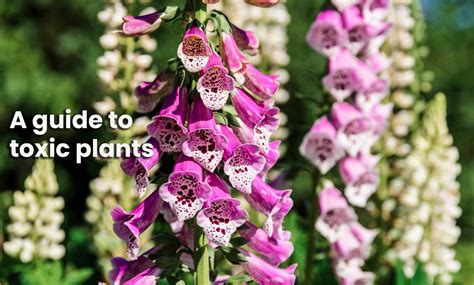
A highly toxic plant, giant hogweed, has now infested 75% of the United Kingdom, causing severe skin burns and blisters to residents who come into contact with it. The invasive species, known for its sap containing furanocoumarins, poses a significant public health risk, particularly to children and pets, as it spreads rapidly across the nation.
Giant hogweed, scientifically known as Heracleum mantegazzianum, is a towering, invasive plant species that has become a growing concern across the UK. Originally native to the Caucasus region and introduced to Britain as an ornamental plant in the 19th century, it has since spread aggressively, colonizing riverbanks, parks, and even residential gardens. Its rapid proliferation and toxic sap have made it a significant public health hazard.
The plant’s sap contains furanocoumarins, organic chemical compounds that cause phytophotodermatitis. This reaction occurs when the skin comes into contact with the sap and is then exposed to sunlight, leading to severe burns, blisters, and long-lasting scars. Children are particularly vulnerable due to their tendency to play outdoors and their less cautious approach to unfamiliar plants. Pets are also at risk, often suffering painful skin irritations from accidental contact.
The spread of giant hogweed has been rapid and extensive. It is now estimated that the plant infests approximately 75% of the UK, creating widespread concern among local authorities and residents. Areas near water sources, such as riverbanks and streams, are particularly susceptible, as the plant’s seeds are easily dispersed by water. This widespread infestation has led to numerous reports of injuries and a growing demand for effective control measures.
The environmental impact of giant hogweed is also a significant concern. The plant’s dense growth can outcompete native vegetation, reducing biodiversity and disrupting local ecosystems. Its large size and extensive root system can also contribute to soil erosion, particularly along riverbanks, further exacerbating environmental damage.
Controlling the spread of giant hogweed is a challenging task. The plant’s robust nature and prolific seed production make eradication efforts difficult and time-consuming. Various methods are employed, including herbicide application, manual removal, and biological control. However, each method has its limitations and requires careful planning and execution.
Herbicide application is one of the most common methods used to control giant hogweed. Systemic herbicides, which are absorbed by the plant and kill it from the roots up, are generally the most effective. However, the use of herbicides raises environmental concerns, as they can potentially harm non-target plants and contaminate water sources. Therefore, careful application and adherence to safety guidelines are essential.
Manual removal involves digging up the plant and its root system. This method is labor-intensive and requires protective clothing to prevent skin contact with the sap. It is most effective for small infestations and requires repeated efforts to ensure that all parts of the plant are removed. If any portion of the root system remains, the plant can regrow.
Biological control involves introducing natural enemies of the plant to control its spread. This method is considered more environmentally friendly than herbicide application, but it requires extensive research to ensure that the introduced species does not become invasive itself. Several potential biological control agents are being investigated, but none have yet been widely implemented in the UK.
Public awareness campaigns are crucial in preventing injuries and controlling the spread of giant hogweed. Educating the public about the dangers of the plant and how to identify it can help people avoid contact and report infestations to local authorities. Clear signage in affected areas can also warn people of the risks.
The recent increase in reported cases of giant hogweed-related injuries has prompted renewed calls for more effective control measures and greater public awareness. Local authorities are working to identify and map infestations, implement control programs, and educate residents about the risks. However, the scale of the problem requires a coordinated national effort to effectively manage and mitigate the impact of this invasive species.
Residents who come into contact with giant hogweed sap are advised to wash the affected area thoroughly with soap and water and seek medical attention immediately. It is also important to keep the exposed area out of sunlight for at least 48 hours to prevent or minimize the severity of the reaction.
The growing prevalence of giant hogweed serves as a reminder of the potential dangers posed by invasive species and the importance of biosecurity measures to prevent their introduction and spread. Effective management strategies, coupled with public awareness and vigilance, are essential to protect public health and preserve the environment.
The situation has left many residents feeling devastated and concerned about the safety of their communities. “It’s terrifying to think that this plant is spreading so rapidly,” said one resident whose child suffered severe burns after coming into contact with giant hogweed. “We need more action to control it and protect our children.”
The Environment Agency is working with local authorities to monitor and control the spread of giant hogweed, but the task is immense. The agency advises landowners to take responsibility for controlling the plant on their property and to seek professional help if needed. They also emphasize the importance of reporting infestations to help track the plant’s spread and coordinate control efforts.
The long-term impact of giant hogweed on the UK’s environment and public health remains uncertain. However, without concerted action, the plant is likely to continue to spread and pose a significant threat to both. The need for a comprehensive and coordinated approach to managing this invasive species has never been greater.
Detailed Information and Context:
Giant hogweed’s lifecycle typically begins in early spring when the plant starts to emerge from the ground. It grows rapidly, reaching heights of up to 5 meters (16 feet) by early summer. The plant produces large, umbrella-like flower heads that can be up to 50 cm (20 inches) in diameter. These flower heads contain thousands of seeds, which are dispersed by wind and water.
The seeds can remain viable in the soil for several years, making it difficult to eradicate the plant completely. Even after a control program has been implemented, regular monitoring is necessary to detect and remove any new seedlings that emerge.
Giant hogweed is often confused with other similar-looking plants, such as hogweed ( Heracleum sphondylium), angelica (Angelica sylvestris), and cow parsley (Anthriscus sylvestris). However, giant hogweed can be distinguished by its larger size, thicker stem, and distinctive purple blotches on the stem.
The plant’s sap is most potent during the summer months when it is actively growing and flowering. However, it can still cause reactions at other times of the year, particularly if the plant is damaged or disturbed.
The severity of the reaction to giant hogweed sap depends on several factors, including the amount of sap that comes into contact with the skin, the duration of exposure to sunlight, and the individual’s sensitivity. In some cases, the reaction can be severe enough to require hospitalization.
Even after the initial burns and blisters have healed, the affected area may remain sensitive to sunlight for several years. This means that people who have been exposed to giant hogweed sap need to take extra precautions to protect their skin from the sun, such as wearing protective clothing and using sunscreen.
The economic costs of controlling giant hogweed are also significant. Local authorities and landowners must invest considerable resources in implementing control programs and treating injuries caused by the plant. The cost of herbicide application, manual removal, and public awareness campaigns can be substantial.
In addition to the direct costs of control measures, there are also indirect costs associated with the loss of biodiversity and the degradation of ecosystem services. The presence of giant hogweed can reduce the value of land and recreational areas, impacting local economies.
The European Union has recognized giant hogweed as a species of Union concern, which means that member states are required to take measures to prevent its introduction and spread. The UK has implemented various measures to comply with this requirement, including legislation to control the plant and funding for research and control programs.
However, despite these efforts, giant hogweed continues to spread and pose a significant threat to public health and the environment. There is a need for more effective and coordinated action to manage this invasive species.
This includes:
- Greater investment in research to develop new and more effective control methods.
- Improved coordination between local authorities, landowners, and other stakeholders.
- Enhanced public awareness campaigns to educate people about the dangers of giant hogweed and how to avoid contact.
- Stricter enforcement of legislation to prevent the introduction and spread of invasive species.
By taking these steps, it is possible to reduce the impact of giant hogweed and protect public health and the environment. However, it requires a long-term commitment and a collaborative approach.
The Legal Framework and Responsibilities:
In the UK, the control of invasive species like giant hogweed is governed by several pieces of legislation, primarily the Wildlife and Countryside Act 1981. This act makes it an offense to plant or otherwise cause giant hogweed to grow in the wild. While there is no statutory obligation for landowners to remove giant hogweed from their property, they are generally expected to take reasonable steps to prevent its spread to neighboring land.
The Environment Agency plays a crucial role in monitoring and providing guidance on the control of invasive species. They work in partnership with local authorities, landowners, and other organizations to develop and implement control strategies.
Local authorities have the power to serve notices on landowners requiring them to control giant hogweed if it is causing a nuisance or posing a threat to public health. Failure to comply with such a notice can result in prosecution and fines.
In addition to legal obligations, there is also a moral responsibility for landowners to control giant hogweed on their property. The plant’s toxic sap poses a significant risk to public health, and its spread can have detrimental impacts on the environment.
Landowners who are unable to control giant hogweed themselves should seek professional help from qualified contractors. There are many companies that specialize in the control of invasive species and have the expertise and equipment to safely and effectively remove giant hogweed.
It is important to choose a contractor who is experienced in controlling giant hogweed and who is familiar with the relevant legislation and guidelines. The contractor should also be able to provide a risk assessment and a method statement outlining how they will control the plant safely and effectively.
First-hand accounts and stories:
The impact of giant hogweed extends beyond statistics and scientific reports. The personal stories of individuals who have suffered from its effects highlight the urgent need for effective control measures and increased awareness.
Sarah, a mother from Lancashire, recounted her experience: “My son was playing in the park and unknowingly brushed against a giant hogweed plant. Within 24 hours, his arm was covered in painful blisters. The doctors said it was a severe case of phytophotodermatitis. He was in agony for weeks, and the scars are still visible a year later. It was a terrifying experience.”
Another resident, David, a keen gardener from Surrey, shared his ordeal: “I was clearing some overgrown vegetation in my garden when I accidentally came into contact with giant hogweed sap. Despite washing the area immediately, I developed severe burns that required hospital treatment. I was unable to work for several weeks, and the pain was excruciating.”
These stories are not isolated incidents. Many people across the UK have suffered similar experiences, highlighting the widespread impact of giant hogweed. The physical pain, emotional distress, and financial burdens associated with these incidents underscore the importance of preventing contact with the plant and controlling its spread.
Comparative Analysis with Other Invasive Species:
Giant hogweed is just one of many invasive species that pose a threat to the UK’s environment and economy. Other notable examples include Japanese knotweed, Himalayan balsam, and rhododendron.
Japanese knotweed is a highly aggressive plant that can damage buildings and infrastructure. It spreads rapidly through its rhizomes (underground stems) and can be very difficult to eradicate. Himalayan balsam is an annual plant that outcompetes native vegetation and reduces biodiversity. It spreads quickly through its seeds, which are dispersed by wind and water. Rhododendron is a shrub that forms dense thickets, shading out native plants and reducing habitat for wildlife.
Compared to these other invasive species, giant hogweed presents a unique threat due to its toxic sap. While Japanese knotweed can damage property and Himalayan balsam can harm the environment, giant hogweed poses a direct risk to human health.
Each invasive species requires a tailored approach to control. Japanese knotweed is often treated with herbicides or excavated and disposed of in a landfill. Himalayan balsam can be controlled by manual pulling or cutting before it sets seed. Rhododendron can be controlled by cutting and burning or by using herbicides.
The control of giant hogweed typically involves a combination of methods, including herbicide application, manual removal, and public awareness campaigns. The specific approach depends on the size and location of the infestation, as well as the resources available.
Scientific Research and Ongoing Studies:
Scientists are continuously working to improve our understanding of giant hogweed and develop more effective control methods. Research is focused on several key areas, including:
- Identifying the genes responsible for the production of furanocoumarins.
- Developing biological control agents that can specifically target giant hogweed.
- Evaluating the effectiveness of different control methods in different environments.
- Modeling the spread of giant hogweed to predict future infestations.
One promising area of research is the development of biological control agents. Scientists are investigating several insects and fungi that feed on giant hogweed and could potentially be used to control its spread. However, it is important to ensure that any biological control agent is specific to giant hogweed and does not pose a threat to native plants or other organisms.
Another area of research is focused on improving the effectiveness of herbicide application. Scientists are investigating new herbicides that are more effective at killing giant hogweed and less harmful to the environment. They are also developing techniques for applying herbicides more precisely to minimize the risk of non-target effects.
The data collected from these research studies is essential for informing management decisions and developing effective control strategies. It is also important to share this information with the public to raise awareness and promote responsible behavior.
The Role of Citizen Science:
Citizen science plays a valuable role in monitoring and controlling the spread of giant hogweed. Members of the public can contribute to these efforts by reporting sightings of the plant to local authorities or through online platforms.
These reports can help to identify new infestations and track the spread of the plant over time. They can also provide valuable data for researchers studying the plant’s ecology and distribution.
There are several online resources available to help people identify giant hogweed and report sightings. These resources often include photographs, descriptions, and maps showing the plant’s known distribution.
By participating in citizen science initiatives, members of the public can make a significant contribution to the control of giant hogweed and the protection of public health and the environment.
Preventive Measures and Personal Protection:
Prevention is always better than cure when it comes to giant hogweed. The best way to avoid injury is to avoid contact with the plant altogether.
Here are some simple precautions that people can take:
- Learn how to identify giant hogweed and avoid areas where it is known to grow.
- Wear protective clothing, such as long sleeves, long pants, gloves, and eye protection, when working in areas where giant hogweed may be present.
- Wash your hands thoroughly with soap and water after working outdoors.
- Keep children and pets away from giant hogweed.
- Report sightings of giant hogweed to local authorities.
If you do come into contact with giant hogweed sap, it is important to act quickly. Wash the affected area thoroughly with soap and water and keep it out of sunlight for at least 48 hours. Seek medical attention if you develop burns or blisters.
By taking these precautions, people can significantly reduce their risk of injury from giant hogweed.
FAQ about Giant Hogweed:
-
What is giant hogweed?
- Giant hogweed (Heracleum mantegazzianum) is a large, invasive plant species native to the Caucasus region, known for its sap that causes severe skin burns and blisters upon exposure to sunlight.
-
How can I identify giant hogweed?
- Giant hogweed can be identified by its towering height (up to 5 meters), large, umbrella-like flower heads, thick stem with purple blotches, and large, jagged leaves. It’s often confused with common hogweed, but giant hogweed is significantly larger.
-
What should I do if I come into contact with giant hogweed sap?
- Immediately wash the affected area thoroughly with soap and water. Keep the area out of sunlight for at least 48 hours and seek medical attention as soon as possible to prevent or minimize the severity of the reaction.
-
How is giant hogweed controlled?
- Giant hogweed is controlled through various methods, including herbicide application, manual removal (digging up the plant and its root system), and, potentially, biological control using natural enemies. Public awareness and reporting infestations are also crucial.
-
Is there a legal obligation for landowners to remove giant hogweed from their property?
- While there isn’t a statutory obligation in all cases, landowners are generally expected to take reasonable steps to prevent its spread to neighboring land, especially if it poses a threat to public health. Local authorities can issue notices requiring landowners to control the plant.









